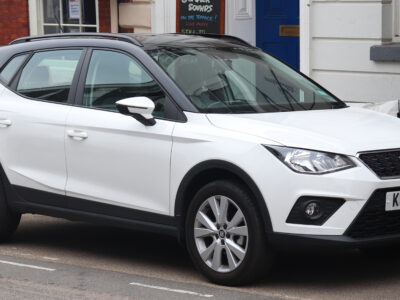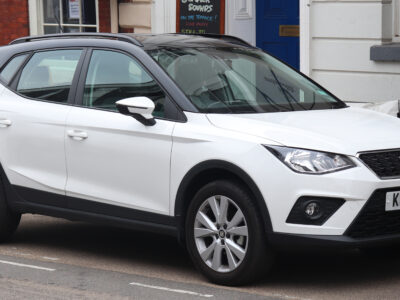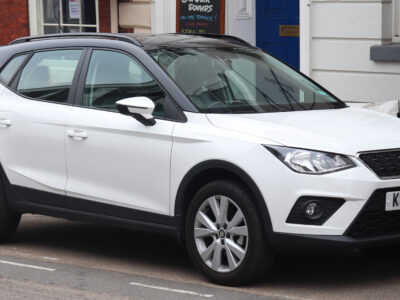
Hyundai i10 Engine Size: Complete Guide to All Generations and Variants

The Hyundai i10 has earned its place as one of the most dependable city cars in the global market — compact yet surprisingly capable. Understanding its engine size, configurations, and performance variations across different generations helps drivers and enthusiasts make informed decisions.
In this guide, we explore every Hyundai i10 engine variant — petrol, diesel, and hybrid — with complete technical data, power outputs, and performance insights.
- Overview of the Hyundai i10 Engine Range
- First Generation (2007–2013)
- Second Generation (2013–2019)
- Third Generation (2020–Present)
- Engine Size Comparison Table
- Petrol Engine Variants Explained
- Diesel Engine Variants (Selected Markets)
- Turbocharged 1.0 T-GDi Performance Engine
- Fuel Economy by Engine Type
- Engine Reliability and Maintenance Insights
- Transmission Pairings and Drivetrain Options
- Performance & Acceleration Figures
- Emission Standards and Eco Features
- Recommended Engine Oil by Engine Type
- Conclusion: Choosing the Right i10 Engine
- FAQs
Overview of the Hyundai i10 Engine Range
The Hyundai i10 has been powered by a variety of compact and efficient engines tailored to meet regional preferences and emission standards. From the early 1.1-liter petrol units to the latest 1.0-liter turbocharged engines, Hyundai has focused on optimizing fuel economy, emissions, and drivability.
Each generation introduced refinements:
- Improved thermal efficiency
- Enhanced power-to-weight ratios
- Refined engine mounts and NVH (Noise, Vibration, Harshness) control
- Lightweight aluminum blocks for better fuel efficiency
First Generation (2007–2013)
The first-generation i10, based on the Hyundai Atos platform, offered simple yet reliable engine options ideal for city driving.
| Engine | Type | Displacement | Power | Torque | Fuel |
|---|---|---|---|---|---|
| 1.1 iRDE | Inline-4 SOHC | 1,108 cc | 66 hp | 99 Nm | Petrol |
| 1.2 Kappa | Inline-4 DOHC | 1,248 cc | 78 hp | 111 Nm | Petrol |
| 1.1 CRDi | Inline-3 Turbo | 1,120 cc | 75 hp | 170 Nm | Diesel |
Highlights:
- The 1.1 iRDE engine was known for durability and low maintenance.
- The 1.2 Kappa offered better refinement and improved performance.
- Diesel variants (in select markets like India and Europe) provided exceptional fuel economy.
Second Generation (2013–2019)
This iteration marked a significant leap in refinement and performance. It featured lighter yet more powerful engines that complied with Euro 6 standards.
| Engine | Type | Displacement | Power | Torque | Fuel |
|---|---|---|---|---|---|
| 1.0 Kappa MPI | Inline-3 DOHC | 998 cc | 66 hp | 95 Nm | Petrol |
| 1.2 Kappa MPI | Inline-4 DOHC | 1,248 cc | 86 hp | 121 Nm | Petrol |
| 1.1 U2 CRDi | Inline-3 Turbo | 1,120 cc | 75 hp | 180 Nm | Diesel |
Notable improvements:
You may be interested in reading How to Reset the Service Interval on a Hyundai i10 (Step-by-Step Guide)
How to Reset the Service Interval on a Hyundai i10 (Step-by-Step Guide)- Smoother throttle response and better low-end torque
- Lower emissions (CO₂ below 100 g/km in some trims)
- Optional 5-speed manual or 4-speed automatic transmission
Third Generation (2020–Present)
The latest i10 generation combines modern engine technology with efficient design. Hyundai introduced Smartstream engines, offering better fuel management and reduced friction losses.
| Engine | Type | Displacement | Power | Torque | Fuel |
|---|---|---|---|---|---|
| 1.0 MPi | Inline-3 | 998 cc | 66 hp | 96 Nm | Petrol |
| 1.2 MPi | Inline-4 | 1,197 cc | 83 hp | 118 Nm | Petrol |
| 1.0 T-GDi | Inline-3 Turbo | 998 cc | 99 hp | 172 Nm | Petrol |
Features:
- Start-stop system (ISG)
- Multi-point injection with variable intake
- Lightweight aluminum head and block
- 5-speed manual or AMT gearbox options
Engine Size Comparison Table
| Generation | Engine Options | Displacement Range | Power Range | Torque Range |
|---|---|---|---|---|
| 1st Gen (2007–2013) | 1.1 iRDE, 1.2 Kappa, 1.1 CRDi | 1.1 – 1.2 L | 66 – 78 hp | 99 – 170 Nm |
| 2nd Gen (2013–2019) | 1.0 Kappa, 1.2 Kappa, 1.1 CRDi | 1.0 – 1.2 L | 66 – 86 hp | 95 – 180 Nm |
| 3rd Gen (2020–Present) | 1.0 MPi, 1.2 MPi, 1.0 T-GDi | 1.0 – 1.2 L | 66 – 99 hp | 96 – 172 Nm |
Petrol Engine Variants Explained
The petrol range has always been the core of the i10 lineup.
- 1.0-liter 3-cylinder engines are ideal for urban efficiency.
- 1.2-liter 4-cylinder engines deliver smoother operation for highway commutes.
- Turbocharged 1.0 T-GDi adds excitement, offering near-hot-hatch performance in the i10 N Line.
Diesel Engine Variants (Selected Markets)
Though discontinued in most regions, the diesel i10 was once a favorite for long-distance economy.
The 1.1 CRDi engine combined direct injection and a variable-geometry turbocharger, achieving impressive fuel economy figures above 65 mpg (UK).
Turbocharged 1.0 T-GDi Performance Engine
The 1.0 T-GDi is the sportiest powertrain offered in the i10 N Line.
Key specs:
- Displacement: 998 cc
- Power: 99 hp @ 4,500 rpm
- Torque: 172 Nm @ 1,500–4,000 rpm
- 0–100 km/h: ~10.5 seconds
- Combined efficiency: ~47 mpg (UK)
This engine uses direct injection and a small turbocharger for instant boost and mid-range punch, making the i10 feel agile and responsive.
Fuel Economy by Engine Type
| Engine | Transmission | Fuel Economy (Combined) |
|---|---|---|
| 1.0 MPi | 5MT | 55–60 mpg (UK) |
| 1.2 MPi | 5MT / AMT | 50–55 mpg (UK) |
| 1.0 T-GDi | 5MT | 45–50 mpg (UK) |
| 1.1 CRDi | 5MT | 65–70 mpg (UK) |
Engine Reliability and Maintenance Insights
Hyundai i10 engines are known for robust construction and minimal failure rates. Key maintenance points include:
You may be interested in reading How to Reset the Service Interval on a Hyundai i10 (Step-by-Step Guide)
How to Reset the Service Interval on a Hyundai i10 (Step-by-Step Guide) Hyundai i10 Clutch Replacement Cost in the UK (2025 Guide)
Hyundai i10 Clutch Replacement Cost in the UK (2025 Guide)- Regular oil and filter changes every 10,000–12,000 km
- Periodic spark plug replacement (every 40,000–50,000 km)
- Inspecting timing chain/belt tension (especially in early i10 models)
Common issues in early engines:
- Idle fluctuations (1.1 iRDE)
- Coil pack wear (1.2 Kappa)
- EGR valve clogging (1.1 CRDi)
Transmission Pairings and Drivetrain Options
Depending on the engine and trim, the i10 offers:
- 5-speed manual transmission across all engines
- Automated Manual Transmission (AMT) for convenience
- Front-wheel drive layout ensuring predictable handling
Performance & Acceleration Figures
| Engine | 0–100 km/h | Top Speed |
|---|---|---|
| 1.0 MPi | 14.6 sec | 155 km/h |
| 1.2 MPi | 12.6 sec | 171 km/h |
| 1.0 T-GDi | 10.5 sec | 185 km/h |
Emission Standards and Eco Features
The i10 engines meet stringent emission norms:
- Euro 6D compliant for recent models
- Integrated ISG (Idle Stop & Go)
- Low-rolling-resistance tyres and optimized aerodynamics
Recommended Engine Oil by Engine Type
| Engine | Oil Grade | Capacity | Change Interval |
|---|---|---|---|
| 1.0 MPi | 5W-30 (ACEA A5/B5) | 3.3 L | 10,000 km |
| 1.2 MPi | 5W-30 (API SN) | 3.6 L | 10,000 km |
| 1.0 T-GDi | 5W-40 (Fully Synthetic) | 3.8 L | 10,000 km |
| 1.1 CRDi | 5W-30 (C3) | 3.0 L | 15,000 km |
Conclusion: Choosing the Right i10 Engine
Selecting the right Hyundai i10 engine depends on your driving habits:
- For urban commuters, the 1.0 MPi provides unmatched fuel efficiency.
- For balanced power and comfort, the 1.2 MPi remains the top choice.
- For spirited drivers, the 1.0 T-GDi offers sporty performance without compromising economy.
The Hyundai i10’s range of compact engines perfectly reflects Hyundai’s engineering philosophy — efficiency, reliability, and performance in a small footprint.
FAQs
1. What is the engine size of the latest Hyundai i10?
The current model offers 1.0-liter and 1.2-liter petrol engines.
2. Does the Hyundai i10 have a turbo engine?
Yes, the 1.0 T-GDi turbo engine is available in the i10 N Line variant.
3. Which Hyundai i10 engine is most fuel-efficient?
The 1.0 MPi and 1.1 CRDi (in older models) are the most fuel-efficient options.
 How to Reset the Service Interval on a Hyundai i10 (Step-by-Step Guide)
How to Reset the Service Interval on a Hyundai i10 (Step-by-Step Guide) Hyundai i10 Clutch Replacement Cost in the UK (2025 Guide)
Hyundai i10 Clutch Replacement Cost in the UK (2025 Guide) Hyundai i10 Fuel Tank Capacity: Complete Guide (2008–2020)
Hyundai i10 Fuel Tank Capacity: Complete Guide (2008–2020)4. Is the i10 suitable for highway driving?
The 1.2 MPi and 1.0 T-GDi engines handle highways comfortably, offering good mid-range torque.
5. What engine oil is best for the Hyundai i10?
Use 5W-30 or 5W-40 fully synthetic oil, depending on the engine type and climate.
If you want to know other articles similar to Hyundai i10 Engine Size: Complete Guide to All Generations and Variants you can visit the category Service and Parts.
Deja una respuesta






More content of your interest